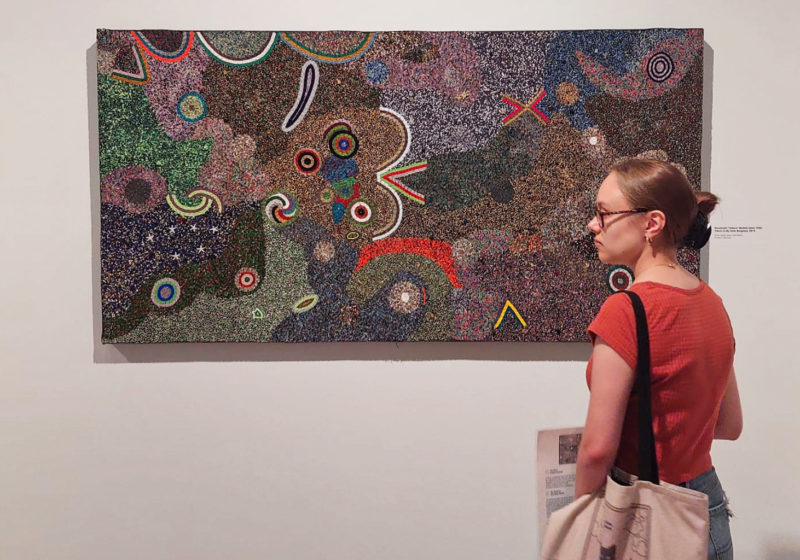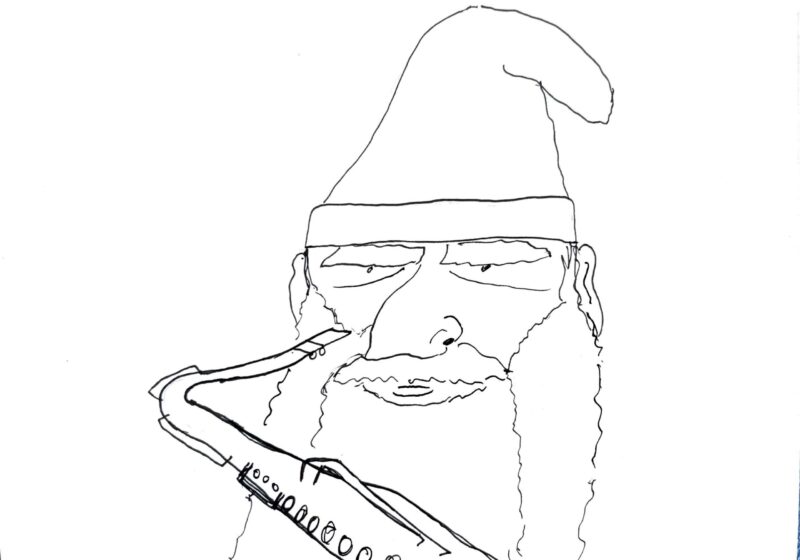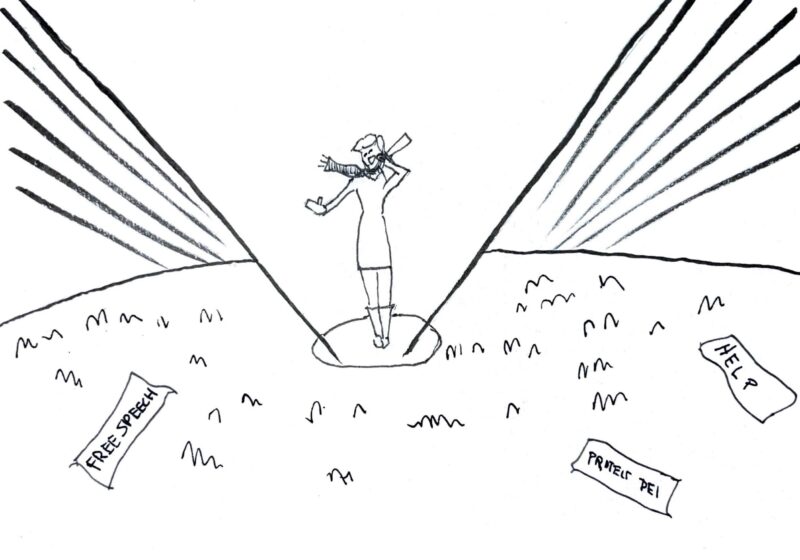To be quite honest, I did not realize that sparkly glass beads could capture such emotion. I was unaware of the depth and artistic talent that could be displayed from beads on black cloth until I walked into the temporary exhibition space at the Memorial Art Gallery (MAG) this past July. As someone who had the wonderful opportunity to complete a summer internship at the MAG, I began to get used to being around impressive art. The collection, in its entirety, remained an awesome sight, but I had already selected which pieces were my favorites and those that I was most knowledgeable about. However, that feeling of familiar contentment was gone as soon as I laid my eyes on “Ubuhle Women: Beadwork and the Art of Independence.”
This stunning new installation is now on view in the Docent Gallery until Oct. 23, and can really only be appreciated if you see it in person. Photos of this exhibit most definitely do not do it justice, as you can only observe the way the light glimmers across the beads and the intricate deepness of each piece if you’re standing right in front of them. With this new type of beaded art, six South African women have redefined what contemporary art looks like. They maintain traditional beading techniques reminiscent of Xhosa skirts and headscarves that many of them grew up wearing, while also turning them into art pieces that can be displayed in a gallery. Through stretching these beaded textiles, ndwangos, onto a canvas, they not only preserve this generational beading tradition but also are able to step into the contemporary art world.
However, this artwork is not just beautiful beads threaded in an interesting way. Each artist, including Ntombephi “Induna” Ntobela, Zondille Zondo, Zandile Ntobela, and Thando Ntobela, whose names are not mentioned frequently enough in this exhibition, incorporate their own experiences and emotions through their individual styles into their artwork. They do not start beading with a pattern laid out, but go where the piece takes them. Some pieces by the master beader, Ntombephi Ntobela, who has earned the respected title of “Induna,” focus on the personal spiritual relationship she has with the nature around her. Others incorporate their heritage, and memories from their childhood into their work. Each artist has a specific style, with some having signature patterns that appear in each piece they create: The pattern of a peach tree from Zondille Zondo’s Zulu childhood can be seen in her works, while others use distinct circle patterns or colors to express their Xhosa childhood. Once you can point out each artist’s style, it is an amazing feeling to be able to look at these masterpieces and know exactly which artist made them.
The most impressive piece in the entire exhibition has to be the enormous seven-paneled work titled “The African Crucifixion.” This piece is so large that it was questionable whether or not it would fit in the gallery. One of the curators initially proposed hanging it in the upstairs gallery space, but decided against it because she thought it would feel too separated from the rest of the collection. So, they had to build an entire slanted wall in the middle of the gallery, allowing it to lay tilted instead of vertically. This work is one of the only pieces that all of the artists collaborated on, and it is fascinating to look at because of all the intricate details and styles represented. In an attempt to reconcile the colonization of the African continent with their own religion of Christianity, this work contains various scenes of violence and peace that all come together behind a massive depiction of Jesus Christ crucified on the cross. With Jesus’ face having to be redone multiple times to find the most fitting expression, it is obvious that there can be no equal to this astonishing masterpiece.
The Ubuhle womens’ beadwork is some of the most stunning and intricate art that I have ever seen, and I cannot praise it enough. There is no feeling quite like walking into a space that is beautiful in pictures, only to realize that cameras could never capture what you could see in person. I was quite literally walking around the gallery like an idiot trying to observe how different the beadwork looked from afar and up close. I encourage all of you to also look like idiots wandering around the Docent Gallery because I can guarantee you will not find another exhibition worthy of looking like an idiot for.





